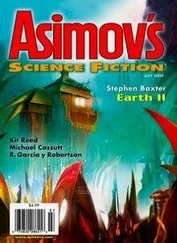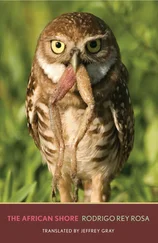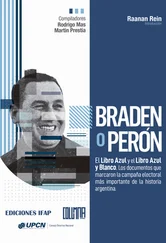1 Thucydides, Book II, 8.
2 W. Olney, ‘Shiloh’ as Seen by a Private Soldier: A Paper Read before California Commandery of the Military Order of the Loyal Legion of the United States, May 31, 1889 (Kessinger Publishing, Whitefish, Mont., 2007).
3 V. Krivenko, Ekipazh mashiny boevoi (St Petersburg, 2004), p. 380.
4 Unnamed Communist, quoted in R. Sikorski, Dust of the Saints: A Journey to Herat in Time of War (New York, 1990), pp.180–83.
5 Sher Ahmad Maladani, interview, Herat, 10 September 2008.
6 Afghanistan Justice Project, Casting Shadows: War Crimes and Crimes against Humanity, 1978–2001 , The Century Foundation (www.tcf.org), 2005, p. 21 ( http://www.afghanistanjusticeproject.org/).
7 Ismail Khan, who was an officer in the Herat garrison, gave an extensive account of the rising to Sikorski ( Dust of the Saints , pp. 228 et seq.). The casualty figures Khan gives are not credible, and his role in the rising has been exaggerated, though he later became a major mujahedin leader; he fought the Russians, was captured by the Taliban, and served as a minister in the government of President Karzai. For a scholarly account of his career, see A. Giustozzi, ‘Genesis of a Prince: The Rise of Ismail Khan in Western Afghanistan, 1979–1992’, Crisis States Research Centre, London School of Economics, September 2006, and A. Giustozzi, Empires of Mud (London, 2009).
Part I: The Road to Kabul
1 A. Snesarev, Afganistan (Moscow, 2002), p. 199. The book was originally published in 1921, but the author was arrested under Stalin and it remained largely unknown until it was republished eighty years later.
1 P. Hopkirk, The Great Game: The Struggle for Empire in Central Asia (London, 1992), p. 305.
2 W. Ball, Monuments of Afghanistan (London, 2008).
3 A. Rasanaygam, Afghanistan: A Modern History (London, 2005), pp. 42–5; L. Dupree, Afghanistan (Oxford, 1997), p. 599.
4 Kh. Khalfin, Politika Rossii v Srednei Azii (1857–1868) (Moscow, 1960), pp. 19–43. This scholarly work contains much well-documented information on Russian official thinking about Central Asia in the nineteenth century. Like Khalfin’s other book on British policy in Afghanistan, Proval britanskoi agressii v Afganistane (Moscow, 1959), you need to aim off for the Soviet and Marxist bias.
5 A. Lyakhovski and S. Davitaya, Igra v Afganistan (Moscow, 2009), p. 16.
6 Ibid., p. 20.
7 Hopkirk, The Great Game , p. 22.
8 There is an account of Orlov’s expedition in E. Parnov, ‘V Indiyu—Marsh’, Znanie—sila , No. 10/04 ( http://www.znanie-sila.ru/online/issue_2962.html).
9 Russian officers told the journalist Charles Marvin in the late 1880s that Russia could invade India, but had no intention of doing so: C. Marvin, The Russian Advance towards India (originally published 1882; Peshawar, 1984), p. 78; for Bennigsen see D. Lieven, Russia against Napoleon (London, 2009), p. 64.
10 Khalfin, Proval britanskoi agressii v Afganistane , pp. 33–4.
11 There is a cursory and unconvincing discussion of this episode in Lyakhovski and Davitaya, Igra v Afganistan , pp. 25–6.
12 Ibid., p. 32.
13 Khalfin, Politika Rossii v Srednei Azii (1857–1868) , pp. 31–2 and 73, quoting documents in the Central State Military Political Archive of the USSR (TsGVIA).
14 Ibid., pp. 89–104.
15 This is the broad conclusion of Alexander Morrison’s Russian Rule in Samarkand, 1868–1910: A Comparison with British India (Oxford, 2008). The quotation comes from p. 292.
16 Khalfin, Proval britanskoi agressii v Afganistane , p. 30. Khalfin is a useful corrective to most British accounts of the Afghan wars; J. Stewart, Crimson Snow (Stroud, 2008), pp. 39–42.
17 C. Lamb, The Sewing Circles of Herat (London, 2004), pp. 221 et seq.
18 G. Forrest, Life of Field Marshal Sir Neville Chamberlain, G.C.B., G.C.S.I . (London, 1909), pp. 142–51.
19 D. Loyn, Butcher and Bolt (London, 2008), p. 109.
20 Marvin, The Russian Advance towards India , p. 43; W. F. Monypenny and G. Buckle, The Life of Benjamin Disraeli, Earl of Beaconsfield (London, 1910–20), Vol. VI, pp. 154–5.
21 Hopkirk, The Great Game , p. 175, quoting John W. Kaye, History of the War in Afghanistan (London, 1851).
22 Lyakhovski and Davitaya, Igra v Afganistan , p. 49.
23 Ibid., p. 64.
24 N. Khrushchev, Khrushchev Remembers (London, 1971), p. 508.
25 P. Blood (ed.), Afghanistan: A Country Study (Washington, DC, 2001).
26 A. Lyakhovski, Tragedia i doblest Afgana (Moscow, 1995) ( http://www.rsva.ru/biblio/prose_af/afgan_tragedy_and_glory/index.shtml).
27 Lamb, The Sewing Circles of Herat , pp. 221 et seq.
28 N. Dupree (Wolfe), An Historical Guide to Kabul (Kabul, 1965), p. 68.
29 A. Abram, MS diary (by kind permission of Mr Abram).
30 Lamb, The Sewing Circles of Herat , p. 30.
31 J. Steele, ‘Red Kabul Revisited’, Guardian , 13 November 2003.
32 Lamb, The Sewing Circles of Herat , p. 216.
1 Alexander Lyakhovski, conversation, Gelendzhik, 19 September 2007.
2 For example, see V. Snegirev, Ryzhy (Moscow, 2000), p. 146.
3 V. Kryuchkov, Lichnoe delo , 2 vols. (Moscow, 1996), Vol. 1, p. 188.
4 D. Gai and V. Snegirev, Vtorzhenie (Moscow, 1991), p. 10.
5 A. Lyakhovski, Tragedia i doblest Afgana (Moscow, 1995) ( http://www.rsva.ru/biblio/prose_af/afgan_tragedy_and_glory/index.shtml).
6 ‘An Appeal to the Leaders of the PDPA Groups “Parcham” and “Khalq”’, dated 8 January 1974, Cold War International History Project ( www.cwihp.org), by permission of the Woodrow Wilson International Center for Scholars.
7 Afghanistan Justice Project, Casting Shadows: War Crimes and Crimes against Humanity, 1978–2001 , The Century Foundation ( www.tcf.org), 2005, p. 13 ( http://www.afghanistanjusticeproject.org/).
8 Lyakhovski, Tragedia i doblest Afgana .
9 Dmitri Ryurikov, interview, Moscow, 23 July 2009.
10 Lyakhovski, Tragedia i doblest Afgana (Moscow, 2009), p. 108.
11 Gai and Snegirev, Vtorzhenie , pp. 81 and 16.
12 Kryuchkov, Lichnoe delo , Vol. 1, p. 192.
13 See notes on Puzanov’s report taken by Odd Arne Westad from the original at the Center for the Storage of Contemporary Documentation (TsKhSD), fond (f.) 5, opis (op.) 75, delo (d.) 1179, listy (11.) 2–17. Westad’s notes are published by the Cold War International History Project at the Woodrow Wilson Center, Washington, DC ( http://www.wilsoncenter.org/index.cfm/topic_id=1409&fuseaction=va2.document&identifier=5034DB6A-96B6–175C-91262B384BCC068C&sort=Collection&item=Soviet%20Invasion%200f%20Afghanistan).
14 G. Dorronosoro, Revolution Unending: Afghanistan, 1979 to the Present (New York, 2005), p. 96.
15 N. Ivanov, Operatsiu Shtorm nachat ranshe (Moscow, 1993), Chapter 14 ( http://militera.lib.ru/prose/russian/ivanov_nf/index.html); Valeri and Galina Ivanov, interview, Moscow, 14 March 2010.
16 There are conflicting accounts of the rising in R. Sikorski, Dust of the Saints: A Journey to Herat in Time of War (New York, 1990); A. Hyman, Afghanistan under Soviet Domination 1964–81 (London, 1982); A. Giustozzi, Genesis of a ‘Prince’: The Rise of Ismail Khan in Western Afghanistan, 1979–1992 (Crisis States Research Centre, London School of Economics, September 2006); Dorronosoro, Revolution Unending , quotes Olivier Roy, Afghanistan, Islam et modernité politique (Paris, 1985), p. 146, as giving a wide margin for the total number of casualties, between 5,000 and 25,000 victims; A. Lyakhovski and S. Davitaya, Igra v Afganistan (Moscow, 2009), p. 135, give a low estimate for the number of Soviet victims. Other low estimates are in G. Zaitsev, Alpha—My Destiny (St Petersburg, 2005), p. 118; V. Zaplatin, ‘Do shturma dvortsa Amina’, Zavtra , No. 51 (316), 21 December 1999 ( http://www.zavtra.ru/cgi/veil/data/zavtra/99/316/61.htm); Gai and Snegirev, Vtorzhenie , p. 78; and V. Ablazov, Afganistan chetvertaya voina (Kiev, 2002), p. 53. Even some Russians accepted the higher figure. D. Cordovez and S. Harrison, Out of Afghanistan (Oxford, 1995), p. 36, quote a high estimate given by a senior Soviet official in 1989. The Russian Ambassador, Zamir Kabulov, told me in Kabul on 7 September 2008 that he accepted the figure of 100.
Читать дальше












